~~ Book 1893080551 ~~History of the Empire of Japan
Imperial Japanese Commission of the
World's Columbian Exposition, 1893
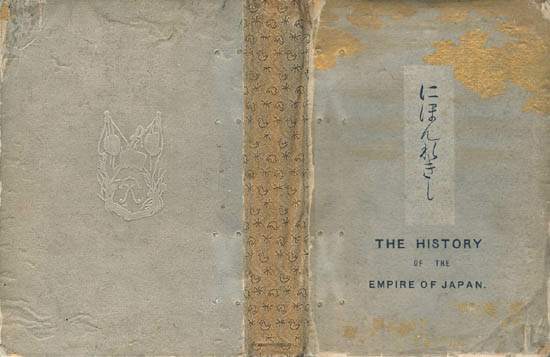
Condition. The book is in Good+ condition. The silk covering on the boards and spine is torn, broken and chipped in several places and pulling away in many places, particularly along the edges. The decorative string ties on the front and back boards are not present. The binding is solid. Internally the book is clean and in Very Good condition. No markings, staining or foxing internally. The maps, plans and woodblock prints are in excellent condition. Inside the back cover are two small bookseller's labels: "Isseido Shoten" (Tokyo) and "Orientalia" (NYC). There is evidence of removal of a small Japanese language label on a blank free page at the rear. This book is rarely seen with the original (and fragile) silk covered boards and spine as with this one.
Takatsu Kuwasaburo et. al.
Brinkley, F. (translator):
History of the Empire of Japan, Compiled and Translated for the Imperial Japanese Commission of the World's Columbian Exposition, Chicago, U.S.A., 1893, Tokyo, published by the Dai Nippon Tosho Kabushiki Kwaisha, by order of the Department of Education, Tokyo, printed at the "Japan Mail" Office, Yokohama, 1893, 8vo (6 1/2 x 9 1/2 in - 16.6 x 24 cm), plain gray silk covered boards, front board with title in black in Japanese and English and gilt decoration (clouds), back board has blindstamped illustration, spine covered in silk with decorative design of birds and stars, cover edges beveled, decorative endpapers, decorative (not actually a part of the books binding) four hole string ties top and bottom on front and back boards, 1 color foldout map, 2 plans, 5 black and white collotype double page plates by K. Ogawa, 5 color double page woodblock plates, 18 black and white double page woodblock plates, 11 black and white single page woodblock plates, table of contents (I-VI), preface (I-VI), 428 pp. An important 19th century history of Japan produced under the authority of an Imperial commission. This book was "...intended for the use of visitors to the Japanese Section of the World's Columbian Exposition in Chicago, U.S.A, 1893."
Author's include Takatsu Kuwasaburo, Mikami Sanji, Isoda Masaru, Shigeno Yasuyori, Hoshino Hisashi, all members of the Committee of Historiographical Compilation in the Imperial University. Translated into English by Captain F. Brinkley, editor of the Japan Mail.
The book has nine chapters.
- History of Remote Antiquity
- From Emperor Jimmu to Taikwa Reformation
- From Taikwa Reformation to the Heian Era
- The Kamakura Era
- Emperors Reigning Alternately, Genko War, the Northern and Southern Dynsasties
- The Muromachi Epoch
- Restoration of Domestic Tranquillity
- Administration of the Edo Shoguns (longest chapter, 80 pp)
- Restoration of Administrative Power to the Sovereign
This is an exceptional book. The content was prepared and reviewed by leading scholars of Japanese history. It was translated into English by the famous F. Brinkley who a few years later would produce his own important set (Japan Described and Illustrated) on Japan. The book was produced with high quality standards. It is printed on high quality paper. Likewise the plates are printed on even higher quality paper. Double plates are tipped to linen and that is bound into the book. The book well illustrated with collotype plates by the noted Japanese photographer and printer, K. (Kazumasa) Ogawa as well as a map, 2 plans and 29 woodblock plates (including 5 that are double page and in color). Clearly the Commission desired that Japan be represented well at the World's Columbian Exposition of 1893 through this book.
The copy I have examined bore a paste on label with a number (2416) inside the back cover. I presume these labels indicate the number of the volume in the production run. This has not been established however.
Title Page:
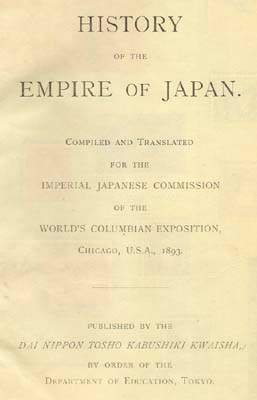
The 5 Black and White Double Page Collotype Plates by K. Ogawa:
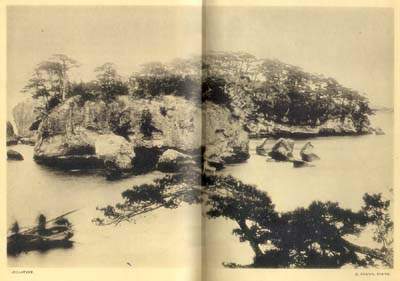
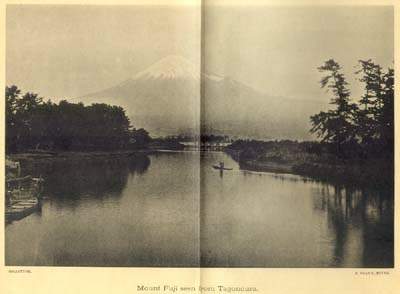

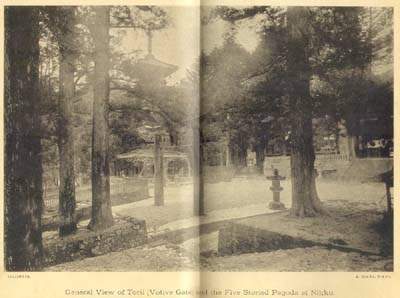
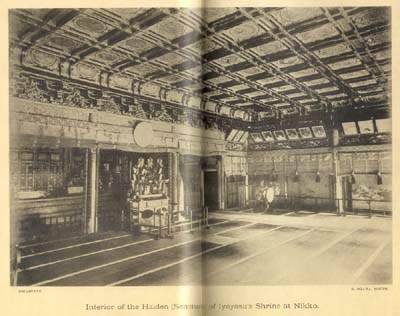
Lettering:

The 5 Color Double Page Woodblock Plates:

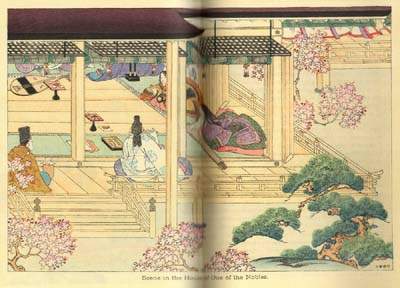

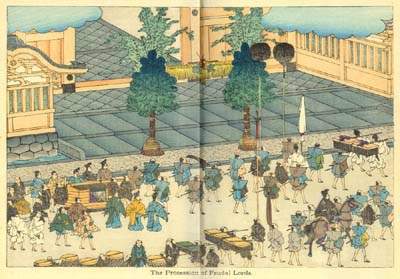
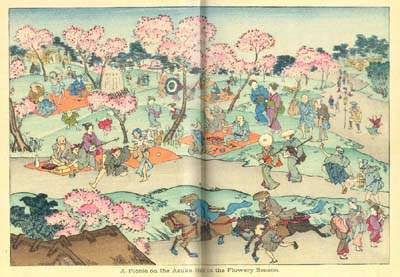
Examples of the Black and White Double Page Woodblock Plates:

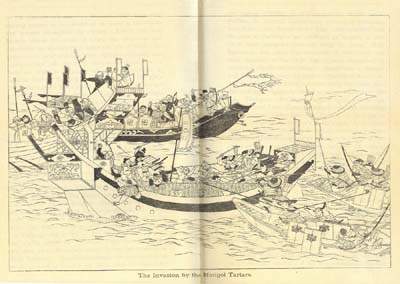
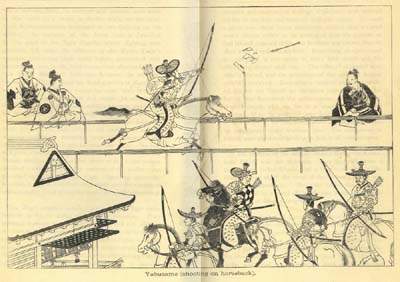
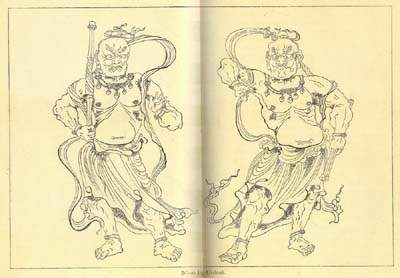

Examples of the Black and White page Page Woodblock Plates:
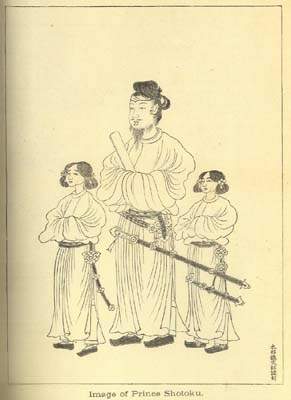
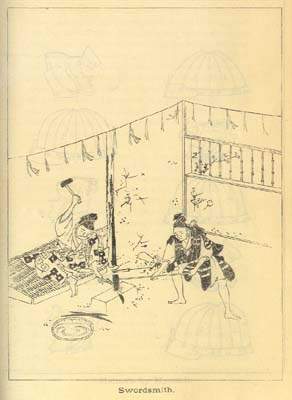
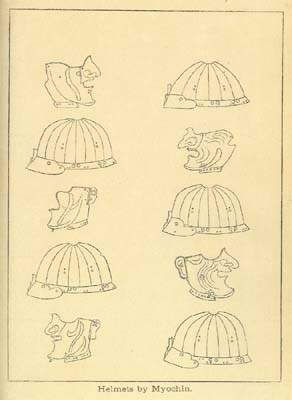
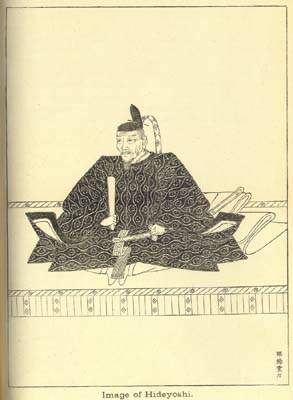
Decorative Endpapers (front and back pastedowns and adjacent pages)
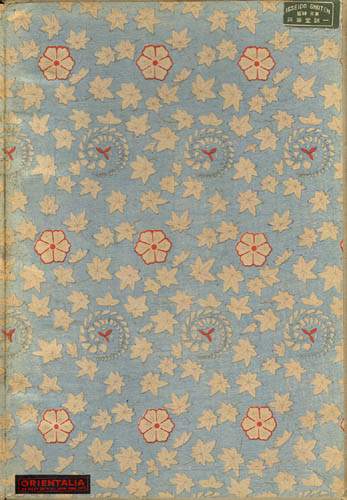
Japanese Language Colophon at the Rear

Printed: Meiji 26 (1893).10.5
Published: Meiji 26 (1893).10.6
Summary of Illustrations/Plates
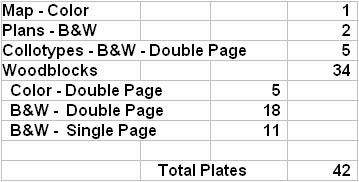
Table of Plates
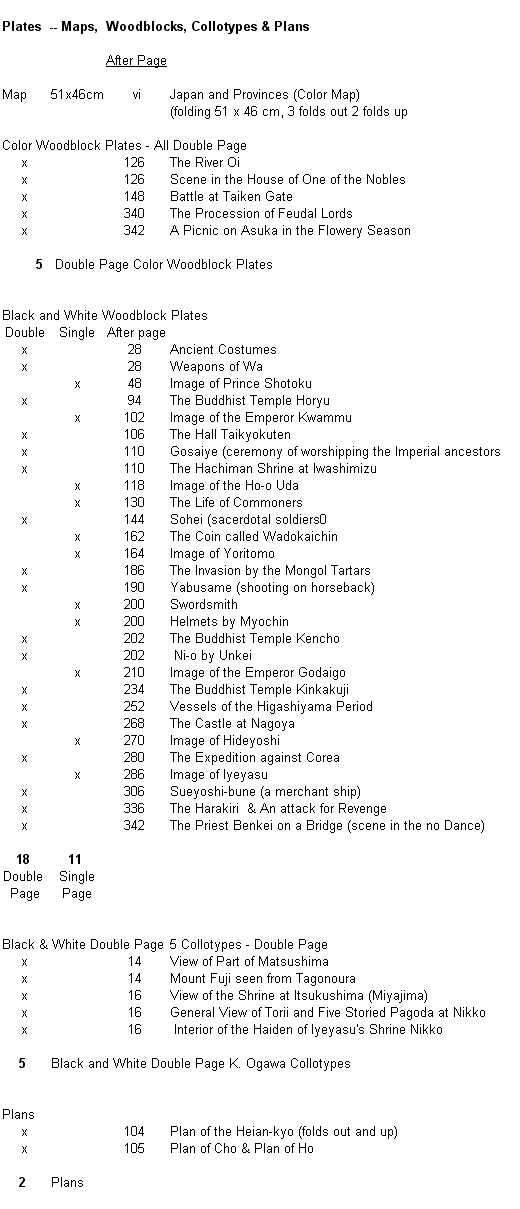
1 Map - Color:
- Japan in Provinces (color, multifold, 3 folds out, 1 fold up, image 16 1/2 x 18 in - 42.5 x 45 cm), with inserts to Loo Choo Islands and Yezo, after page vi
2 Plans - Black and White:
- Plan of the "Heian-kyo" (b&w, 1 fold out 1 fold up, plate 10 x 14 in - 25 x 35 cm), after page 104
- Plan of Cho, Bo & Ho (b&w, double page), after page 104
5 Collotypes - Double Page, Black & White:
- View of Part of Matsushima (b&w collotype, double page, K. Ogawa), after page 14
- Mount Fuji seen from Tagonoura (b&w collotype, double page, K. Ogawa), after page 14
- View of the Shrine at Itsukushima (Miyajima) (b&w collotype, double page, K. Ogawa), after page 16
- General View of Torii and Five Storied Pagoda at Nikko (b&w collotype, double page, K. Ogawa), after page 16
- Interior of the Haiden of Iyeyasu's Shrine, Nikko (b&w collotype, double page, K. Ogawa), after page 16
5 Color Woodblocks (All Double Page):
- The River Oi (color woodblock, double page), after page 126
- Scene in the House of One of the Nobles (color woodblock, double page) after page 126
- Battle at the Taikan Gate (color woodblock, double page), after page 148
- The Procession of Feudal Lords (color woodblock, double page), after page 340
- A Picnic on the Asuka Hill in the Flowery Season (color woodblock, double page), after page 342
29 Black and White Woodblocks (18 Double Page, 11 Single Page):
- Ancient Costumes (b&w woodblock, double page), after page 28
- Weapons of War, etc (b&w woodblock, double page), after page 28
- Image of Price Shotoku (b&w woodblock, single page), after page 48
- The Buddhist Temple Horyu (b&w woodblock, double page), after page 94
- Image of the Emperor Kwammu (b&w woodblock, single page), after page 102
- The Hall "Taikyokuten" (b&w woodblock, double page) after page 106
- Gosaiye (ceremony of worshipping the Imperial ancestors), (b&w woodblock, double page) after page 110
- The Hachiman Shrine at Iwashimizu (b&w woodblock, double page), after page 110
- Image of Ho-o Uda (b&w woodblock, single page), after page 118
- The Life of Commoners (b&w woodblock, single page), after page 130
- Shoei (sacredotal soldiers) (b&w woodblock, double page), after page 144
- The Coin Called Wadokaichin (b&w woodblock, single page), after page 162
- Image of Yoritomo (b&w woodblock, single page), after page 164
- The Invasions by the Mongol Tartars (b&w woodblock, double page), after page 186
- Yabusame (shooting on horseback) (b&w woodblock, double page), after page 190
- Swordsmith (b&w woodblock, single page), after page 200
- Helmets by Myochin (b&w woodblock, single page), after page 200
- The Buddhist Temple Kencho (b&w woodblock, double page), after page 202
- Ni-o by Unkei (b&w woodblock, double page), after page 202
- Image of the Emperor Godaigo (b&w woodblock, single page), after page 210
- The Buddhist Temple Kinkakuji (b&w woodblock, double page), after page 234
- Vessels of the Higashiyama Period (b&w woodblock, double page), after page 252
- The Castle at Nagoya (b&w woodblock, double page), after page 268
- Image of Hideyoshi (b&w woodblock, single page), after page 270
- The Expedition against Corea (b&w woodblock, double page), after page 280
- Image of Iyeyasu (b&w woodblock, single page), after page 286
- Sueyoshi-bune a merchant ship (b&w woodblock, double page), after page 306
- The Harakiri/An Attack for Revenge (b&w woodblock, double page) after page 336
- The Priest Benkei on a Bridge (scene in a No dance) (b&w woodblock, double page) after page 342
For more information on K. Ogawa, click here.
|

























